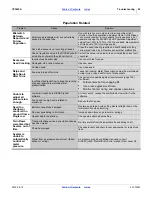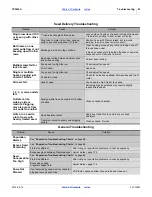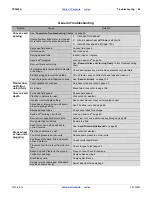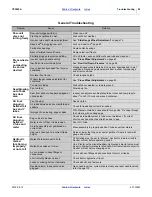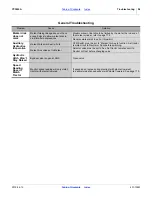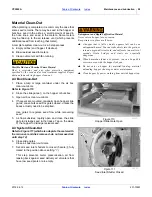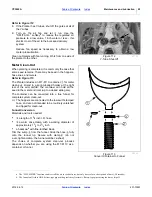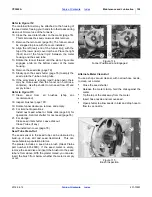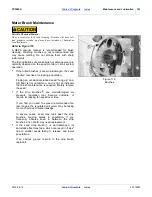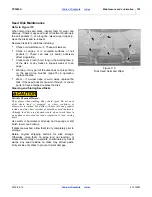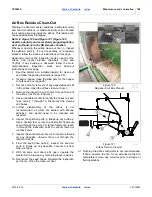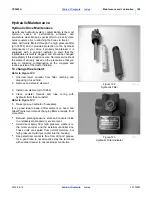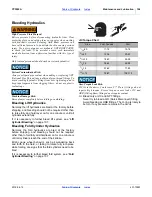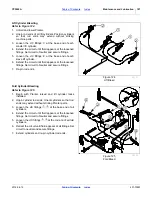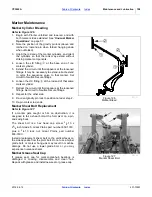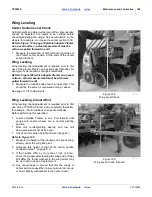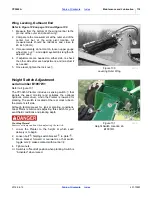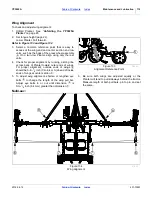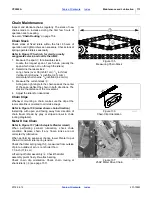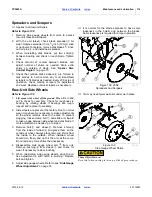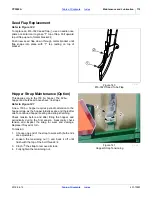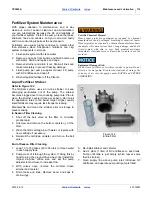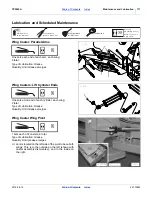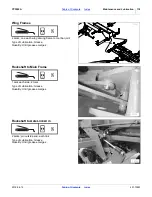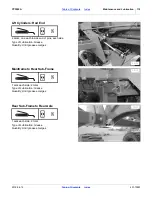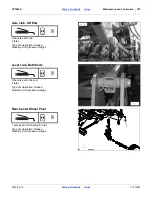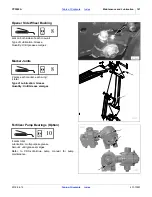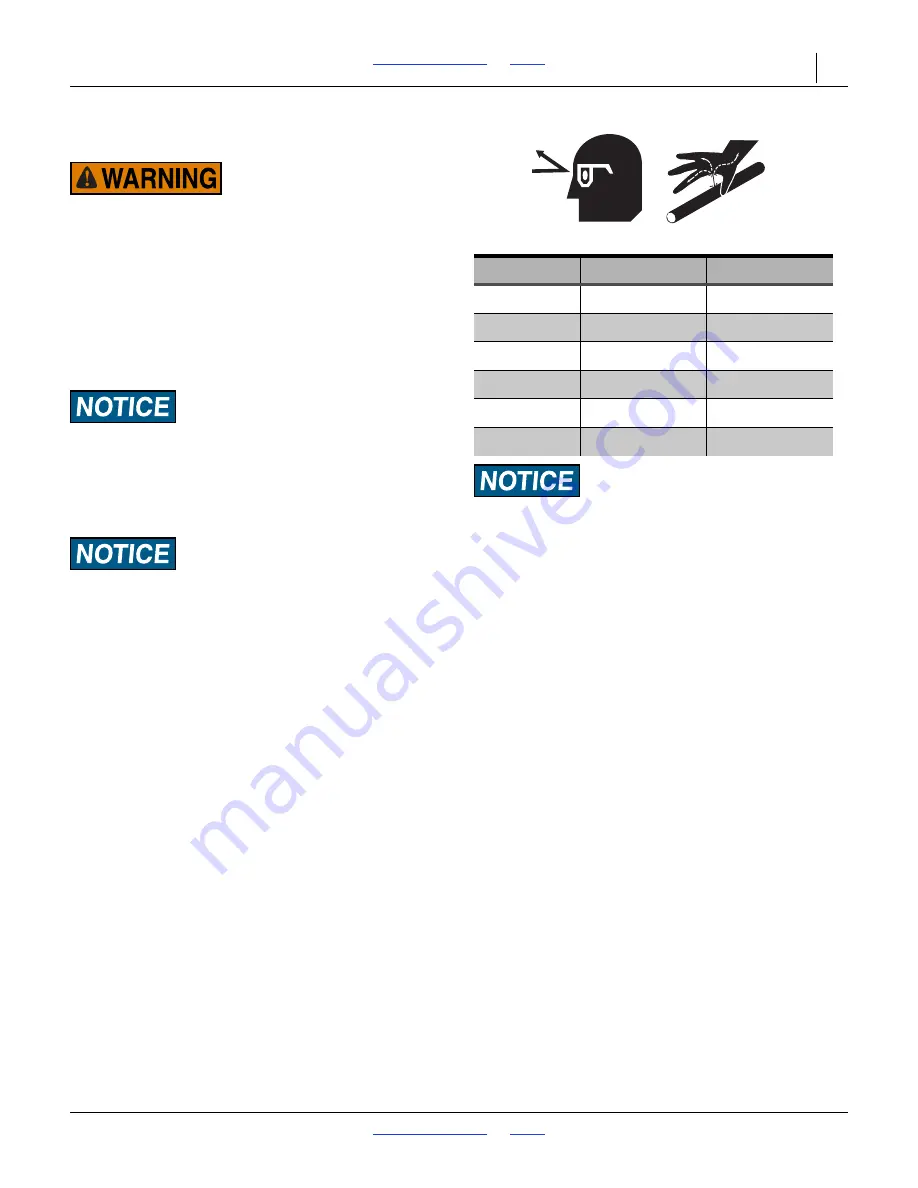
2019-06-12
401-705M
YP3025A
Maintenance and Lubrication
106
Bleeding Hydraulics
High Pressure Fluid Hazard:
Relieve pressure before disconnecting hydraulic lines. Wear
protective gloves and safety glasses or goggles when working
with hydraulic systems. Escaping fluid under pressure can
have sufficient pressure to penetrate the skin causing serious
injury. Use a piece of paper or cardboard, NOT BODY PARTS,
to check for leaks. If an accident occurs, seek immediate
medical attention from a physician familiar with this type of
injury.
Only trained personnel should work on system hydraulics!
System Contamination Risk:
Always use liquid pipe sealant when adding or replacing NPT
(National Pipe Thread, tapered thread) pipe-thread fittings. To
avoid cracking hydraulic fittings from over tightening, and to
keep tape fragments from clogging filters, do not use plastic
sealant tape.
Machine Damage Risk:
Raise planter completely before folding or unfolding.
Bleeding Lift Hydraulics
Normally the lift hydraulics are bled at the factory before
shipping, and bleeding should not be required other than
to raise fully and hold lever on for one minute or until all
cylinders extend fully.
If it is necessary to further bleed lift system, see “
Bleeding Fold Cylinder Hydraulics
Normally the fold hydraulics are bled at the factory
before shipping, and bleeding should not be required
other than to fold fully and hold lever on for one minute or
until all cylinders reach the end of their stroke.
Erratic gage wheel behavior, such as wandering back
and forth in the field, or failing to rotate fully into place
while folding, are signs that the fold cylinders need to be
bled.
If it is necessary to further bleed fold system, see “
JIC Torque Chart
Over-Torque Leak Risk:
JIC (Joint Industry Conference 37
Flare) fittings do not
require high torque. Excess torque causes leaks. JIC and
ORB (O-Ring Boss) fittings do not require sealant.
Bleed only at JIC and NPT fittings.
Never try to bleed a QD (Quick Disconnect) fitting.
Avoid bleeding at ORB fittings. The O-ring is likely to
be torn if any pressure remains in the circuit.
Size
Foot-Pounds
N-m
7
/
16
-20
11-12
15-16
3
/
8
-20
15-16
20-22
9
/
16
-18
18-20
24-28
3
/
4
-16
38-42
52-58
7
/
8
-14
57-62
77-85
11
/
16
-12
79-87
108-119

